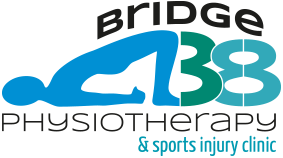As a Physiotherapist, I know general adherence to physiotherapy treatment can be poor with only about 30% continuing after 12 weeks. This is a problem because it has also been proven that treatment adherence has significant effects on outcomes. This is also the case for adherence to exercise, to dietary changes, to taking medication. Those who do it, who comply, DO BETTER!

There are lots of different reasons, we lose our mojo. Here are 3 tips to help you plan and stay motivated to your
Tip 1: Think about your current situation

Have a think about your current situation in relation to what your original goals were or what you really want to achieve.
For example, it might be to get back to running 5k 3 times a week pain-free. It might be to get strong enough to be able to go skiing again after an injury. Have a think or write down what you need to be able to do to achieve your goal.
Tip 2: Next explore why you think you stopped doing what you were doing? These are your barriers to adherence.

Some of the common reasons are:
- I forget to do my exercises.
- There were too many exercises.
- I didn’t have the time.
- I couldn’t see how it would help.
- I’ve had conflicting advice.
- I did it for a week or two but nothing changed.
- I didn’t know exactly what I was meant to do.
Tip 3: Solutions to the Barriers

Use a table format with 2 columns or simply make 2 headings.
Heading 1: Will be the barriers to exercise
Heading 2: Will be your solutions to these barriers.
Below I have written out some of the common barriers that I hear on a regular basis in the clinic. I have come up with some helpful solutions to overcome them. Of course you may come up with your own solutions that work for you.
Barrier 1:
Why am I doing these exercises? How do they relate to my injury?
Solutions:
People who understand “the why” are more likely to adhere to their programme. If you are unsure then speak to your physiotherapist.
Barrier 2:
Expecations: “I’m no better and I’ve been doing my exercises for 2 weeks”
Solutions:
People who are really clear on the
Barrier 3:
Time: “I haven’t got time to do my exercises”
Solutions:
Think about what exercises can be incorporated into your daily routine. For
Sometimes one key exercise can be just as effective as three.
Think about creating a habit – doing your exercises at the same time and same place. A bit like brushing your teeth.
Barrier 4:
Tiredness and Fatigue: ” I’m too tired”
Solutions:
The
Barrier 5:
Forgetfulness: “I keep forgetting to do my exercises”.
Solutions:
Old fashioned I know, but sometimes writing out a plan with tick boxes stuck onto the fridge is a great incentive – there is something so satisfying seeing a row of ticks when completed.
Use Technology: Set up reminders on your phone at a time you know
you will be able to do them. There are also Apps out there now to help you. I put all my client’s exercises on an app called PT Momentum. You just click on the app and all your exercises are there, just tick them off when completed.
Barrier 6:
Too many exercises: Depending on your injury, you may need to work on a few exercises for a successful outcome. This can sometimes feel daunting.
Solutions:
Focus on one area: Pick just one area or one or two exercises to do at each session then vary the exercises you choose in your next session.
Barrier 7:
My Programme is boring.
Solutions:
Ensure you have plenty of variation in your programme. Many exercises can be varied easily to make them harder or easier. Examples may include trying your exercises with your eyes shut or standing on one leg doing your exercises. Perhaps you could add weight or increase or decrease the speed of the exercise. Add a timed challenge – how many can you do in a minute and test yourself every 4-6 weeks.
Patience and Time: Remember to give yourself time to get better. Many injuries take on average over 50 days to get better but adhereing to your rehabilitation is going to achieve you a better and quicker outcome in the long term.
If you would like any more information on progressing or developing your rehabilitation
